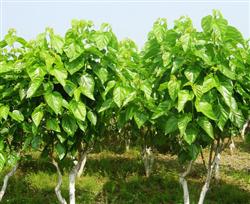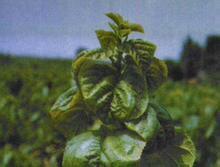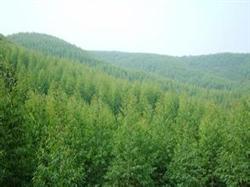Pest control and fertilization of mulberry in spring

First, we should strengthen the prevention and control of insect pests. The harm to mulberry trees in spring is "mulberry inchworm" and "mulberry caterpillar", which mainly feed on mulberry buds and tender leaves. The control method can be sprayed with 1000-fold solution of dichlorvos in the mulberry bud stage, and mainly captured artificially after the mulberry leaves grow up. Second, timely fertilization. Timely application of spring fertilizer can promote the growth of spring buds, the first spring fertilizer is applied in late March, and the second spring fertilizer is applied in late April, accounting for 30% of the total amount of fertilizer applied in the whole year. The application of summer fertilizer can ensure the high yield of mulberry leaves in the whole year, the first summer fertilizer can be mixed with farm fertilizer and chemical fertilizer, and the second summer fertilizer is mainly available nitrogen fertilizer. Summer fertilizer accounts for 50% of the total amount of fertilizer used in the whole year. Autumn fertilizer can promote the vigorous growth of branches and leaves, delay the hardening of autumn leaves and increase the yield of autumn leaves. Autumn fertilizer should be applied immediately after picking leaves, mainly quick-acting chemical fertilizer, accounting for 20% of the total amount of fertilizer applied in the whole year, and autumn fertilizer should not be applied too late. Third, the method of fertilization should be appropriate, which can improve the utilization rate of fertilizer in mulberry. Trenching and fertilization between mulberry rows is suitable for "one-step garden". Digging nests and fertilizing between rows and plants is suitable for "big row mulberry" and scattered mulberry garden. The method of "extra-root fertilization" is to spray water-soluble fertilizer on mulberry leaves, and the leaves absorb nutrients to increase mulberry leaf yield. Extra-root fertilization is suitable in the early stage of spring leaf growth, when the root system has not yet exuberant growth can not absorb a large amount of fertilizer; mulberry leaf prosperous stage Rain Water, lack of sunshine; summer and autumn weather dry, mulberry root can not absorb nutrients normally.
- Prev

Prevention and Control of Diseases and insect pests of Mulberry after Summer cutting
Mulberry dwarf disease is a disease of mulberry trees. It can be divided into three types: yellowing, atrophy and mosaic. First, morbid ① yellowing atrophy: the first onset starts from the top of the branches, and the leaves are small and yellow and curl to the back. With the aggravation of the disease, the lower lobe is thin and small, yellowed and curled with focal spots. The branches are dense and the lateral branches are clustered in the shape of sweeping.
- Next

Does planting eucalyptus damage the land?
1. Suitable environment Eucalyptus prefers warm climate, but is not resistant to hot and humid, and overheated climate grows poorly. Yunnan is mainly distributed in the area of 1200-2400 meters above sea level. It can only withstand a low temperature of about-7 ℃ for a short time. If it is menstruated at-5 ℃ for 2-3 days, it will produce varying degrees of freezing injury, light twigs.
Related
- Fuxing push coffee new agricultural production and marketing class: lack of small-scale processing plants
- Jujube rice field leisure farm deep ploughing Yilan for five years to create a space for organic food and play
- Nongyu Farm-A trial of organic papaya for brave women with advanced technology
- Four points for attention in the prevention and control of diseases and insect pests of edible fungi
- How to add nutrient solution to Edible Fungi
- Is there any good way to control edible fungus mites?
- Open Inoculation Technology of Edible Fungi
- Is there any clever way to use fertilizer for edible fungus in winter?
- What agents are used to kill the pathogens of edible fungi in the mushroom shed?
- Rapid drying of Edible Fungi

